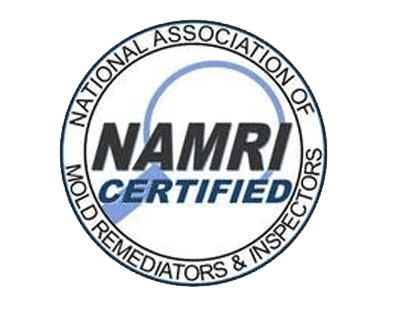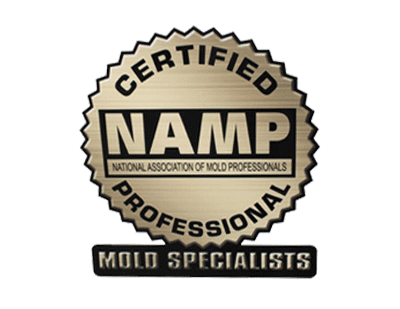As a homeowner or property manager, the thought of a fire breaking out on your property is a nightmare scenario. Fires can cause significant damage to your property and pose severe health risks to those in the vicinity. Understanding the full extent of the damage fires can cause is critical to safeguarding your assets and mitigating risks.
Fire damage can take many forms. Flames can cause structural damage to buildings, while the lingering effects of smoke can cause long-term property damage and create health risks. In some instances, the water used to extinguish the flames can also cause damage. Understanding the impact of fires can help you prepare for and mitigate risks.
Key Takeaways:
- Fire damage can cause structural damage, smoke damage, and water damage to properties.
- Fires pose numerous health risks, including the risk of smoke inhalation, burns, and carbon monoxide poisoning.
- Fires can have significant environmental impacts, including air pollution, deforestation, and water contamination.
- Recovering from fire damage often involves navigating insurance claims and the restoration and rebuilding processes.
- Fire prevention and safety measures, such as smoke detectors and evacuation plans, are crucial for mitigating fire risks.
Property Damage Caused by Fires
When a fire occurs, it can cause significant damage to the property in a variety of ways. One of the most obvious forms of damage is the structural damage caused by the flames. The intense heat of a fire can melt and weaken building materials, resulting in significant destruction. Structural damage can even compromise the integrity of the building, making it unsafe to inhabit.
Another type of damage often associated with fires is smoke damage. Even if a fire does not directly affect a particular area of the property, the smoke can linger and affect everything in its path. Smoke particles are small and can infiltrate walls, carpets, and furniture, leaving behind a pervasive odor and discoloration. Smoke damage can be challenging to remove and may require professional cleanup services.
Finally, it’s not uncommon for firefighting efforts to exacerbate water damage caused by the fire. Water used to put out the flames can seep into walls and flooring, promote mold and mildew growth, and lead to long-term water damage. It’s essential to address water damage promptly to prevent the spread of further destruction.
| Type of Damage | Signs | Prevention |
|---|---|---|
| Structural damage | Melted and weakened building materials, cracks in walls and foundation | Use fire-resistant materials, install effective smoke detectors and fire alarms, practice evacuation plans |
| Smoke damage | Discoloration, pervasive odor | Open windows during a fire, regularly clean and replace HVAC filters, hire professional cleanup services |
| Water damage | Water stains, musty odors, mold growth | Address leaks promptly, repair damaged plumbing, dry out the area as quickly as possible, hire professional restoration services |
By understanding the various ways fires can damage your property, you can take the necessary steps to prevent and mitigate the effects of a fire. Implementing preventative measures such as using fire-resistant materials, installing smoke detectors and fire alarms, and creating evacuation plans can ultimately save lives and property.
Health Risks Associated with Fires
When a fire breaks out, the danger to human life and health are immediate. Flames are not the only risk you face. Smoke and toxic gases that are released from burning materials can be just as harmful as the fire itself. Here are the health risks to be aware of:
| Health Risk | Description |
|---|---|
| Smoke inhalation | Smoke inhalation can cause severe respiratory problems, including shortness of breath, wheezing, coughing, and chest pain. It can also lead to asphyxiation and loss of consciousness. |
| Respiratory issues | Fires release several toxic gases, including carbon monoxide, sulfur dioxide, and nitrogen dioxide, which can irritate and damage the respiratory system. These can lead to acute and chronic respiratory illnesses. |
| Burns | Burns are a common injury when a fire occurs. Burns can range from minor to severe injuries, including first-degree burns that affect the outer layer of skin to third-degree burns that penetrate deep into the skin’s layers. |
| Carbon Monoxide Poisoning | Carbon monoxide (CO) is an odorless, colorless gas that is produced by burning wood, gas, oil, or propane. CO poisoning can cause headaches, dizziness, weakness, nausea, vomiting, chest pain, and confusion. High levels of CO can cause loss of consciousness and death. |
It is crucial to understand the health risks associated with fires so that you can take appropriate steps to protect yourself and your loved ones. Make sure to have smoke detectors installed on every level of your home, check them regularly to ensure they are functioning correctly, and create an evacuation plan in case of an emergency. If you experience any symptoms of smoke inhalation or other health issues after exposure to a fire, seek medical attention immediately.
Environmental Impacts of Fires
When it comes to fires, the ecological impact is just as significant as the damage to property and health. One of the most severe consequences is air pollution, caused by smoke that contains hazardous particles and gases. These pollutants can cause serious respiratory issues and aggravate existing health conditions.
In addition to air pollution, fires can also lead to deforestation, which results in the loss of wildlife habitats. Large-scale wildfires can destroy thousands of acres of forests, putting the lives of numerous vulnerable species at risk. Such fires can also have a significant impact on the quality of water sources, leading to water contamination that can have severe consequences for ecosystems and human health.
| Environmental Impact | Description |
|---|---|
| Air Pollution | Smoke from fires contains hazardous particles and gases that can cause serious respiratory issues. |
| Deforestation | Fires destroy large areas of forests, leading to the loss of wildlife habitats and putting numerous species at risk. |
| Water Contamination | Fires can lead to water contamination, with severe consequences for ecosystems and human health. |
If we continue to ignore the ecological impact of fires, we risk long-term damage to our environment and the loss of biodiversity. That is why it is essential to take the necessary steps to prevent fires and minimize their impact, safeguarding both man-made and natural resources.
Recovering from Fire Damage
Experiencing a fire in your home or business can be a traumatic experience. However, it is important to understand that recovery is possible. Below, we discuss the steps involved in getting back on your feet after experiencing fire damage.
Navigating Insurance Claims
If you have property insurance, filing a claim is the first step towards recovering from fire damage. Here, you will need to work closely with your insurance provider to establish the extent of the damage and the coverage you are entitled to.
It is important to remember that insurance claims can be complex and time-consuming. You may wish to consider hiring a public adjuster to help you navigate the process if you are feeling overwhelmed.
The Restoration Process
Once your insurance claim has been settled, the restoration process can begin. This may involve cleaning and removing debris, repairing structural damage, and addressing any water damage that may have been caused by firefighting efforts.
While it is possible to undertake some aspects of the restoration process yourself, it is generally recommended that you work with professionals who have experience in fire damage restoration. They will have the necessary equipment and expertise to ensure that all aspects of the restoration process are completed to a high standard.
Professional Cleanup Services
Professional cleanup services are an essential aspect of recovering from fire damage. These professionals can help to remove soot and smoke residue from surfaces, as well as deodorize the affected area.
In addition to providing a thorough cleaning, professional cleanup services can help to mitigate some of the health risks associated with fire damage. They can also help to prevent further damage from occurring by addressing potential issues such as mold growth.
Rebuilding Efforts
Depending on the extent of the damage, it may be necessary to rebuild all or part of your property. This can be a significant undertaking, and it is important to work with experienced contractors who can ensure that the work is completed to the required standard.
When rebuilding after fire damage, it is important to consider ways to make your property more fire-resistant. This may involve using fire-resistant materials or rethinking your landscaping strategy to reduce the risk of future fires.
Recovering from fire damage can be a lengthy and challenging process. However, with the right support and resources, it is possible to get your life or business back on track. By taking the steps outlined above, you can make the recovery process as smooth and stress-free as possible.
Fire Prevention and Safety Measures
When it comes to fire prevention, there are several precautions you can take to reduce your risk of property damage and keep yourself and your loved ones safe. Here are some essential fire prevention tips:
- Keep flammable materials away from heat sources.
- Do not overload electrical outlets or use frayed cords.
- Never leave candles or cooking appliances unattended.
- Ensure that your smoke detectors are working and have fresh batteries.
- Install fire extinguishers in locations such as the kitchen, garage, and workshop.
- Create an evacuation plan that includes designated meeting spots and emergency contacts.
- Regularly practice your evacuation plan with your family or housemates.
Investing in smoke detectors and fire extinguishers can save lives and minimize damage in the event of a fire. Make sure you have them installed on every level of your home, including in bedrooms. In the case of a fire, make sure that everyone knows how to use the fire extinguisher and when to evacuate. Practicing your evacuation plan will significantly improve your chance of safely escaping a fire emergency. Taking these steps to prepare and prevent fires will help you stay safe and prepared for any situation.
Fire Damage Mitigation Strategies
When it comes to mitigating fire damage, there are several strategies you can implement to reduce the risk of property damage and injuries. Let’s take a look at some of the most effective measures:
| Strategy | Description |
|---|---|
| Fire-resistant materials | Using fire-resistant materials in the construction of buildings can help to prevent the spread of fires. For example, certain types of roofing materials are more fire-resistant than others, and walls made of concrete or brick are less likely to catch fire. |
| Landscape management | Properly managing the landscape around your property can significantly reduce the risk of fire damage. This includes clearing away dry and dead vegetation, pruning trees and shrubs, and maintaining a defensible space around your home. |
| Fire alarms | Be sure to install working fire alarms throughout your home or building. Test and replace the batteries regularly to ensure they are functioning properly. Having an early warning system in place can help to minimize property damage and save lives. |
| Emergency preparedness | Having an emergency plan in place can make a big difference in mitigating fire damage. Make sure everyone in your household knows what to do in the event of a fire, including how to evacuate safely and where to meet up afterward. Having emergency supplies, such as a fire extinguisher and first aid kit, on hand can also help to minimize damage and injuries. |
Implementing these fire damage mitigation strategies can help to protect your property and loved ones from the devastating effects of fires.
Conclusion
Understanding the impact of fires is crucial for protecting your property, health, and the environment. By recognizing the potential for structural damage, smoke damage, and water damage, you can take proactive steps to safeguard your assets. It is equally important to acknowledge the health risks associated with fires, which can range from smoke inhalation and respiratory issues to burns and carbon monoxide poisoning.
The environmental impact of fires cannot be overstated – they can cause extensive air pollution, deforestation, wildlife habitat loss, and water contamination. However, there are ways to recover from fire damage with the help of insurance claims, restoration processes, and professional cleanup services. Additionally, fire prevention and safety measures such as smoke detectors, fire extinguishers, and evacuation plans can prevent fires from happening in the first place.
By using fire-resistant materials and proper landscape management techniques, you can mitigate the risk of fire damage. Fire alarms and emergency preparedness plans can also make a significant difference. By taking these steps, you can help protect your property, health, and the environment from the devastating impact of fires. Stay informed and be prepared.
FAQ
What kind of damage can fires cause to properties?
Fires can cause various types of damage to properties, including structural damage from the flames, smoke damage that can permeate and linger, and potential water damage resulting from firefighting efforts.
What are the health risks associated with fires?
Fires pose several health risks, such as smoke inhalation leading to respiratory issues, burns, and the danger of carbon monoxide poisoning. It is crucial to understand these risks for fire safety.
What are the environmental impacts of fires?
Fires have broader ecological consequences, including air pollution caused by smoke, deforestation due to large-scale wildfires, loss of wildlife habitats, and the potential contamination of water sources.
How can someone recover from fire damage?
Recovering from fire damage involves navigating insurance claims, undergoing the restoration process for a fire-damaged property, considering professional cleanup services, and addressing the challenges of rebuilding efforts.
What are some fire prevention and safety measures?
To prevent fires, it is important to implement practical measures, such as following fire prevention tips, installing smoke detectors and fire extinguishers, and creating and practicing evacuation plans.
What are some strategies to mitigate fire damage?
Strategies to mitigate fire damage include using fire-resistant materials, practicing proper landscape management, installing fire alarms, and being prepared for emergencies.


































